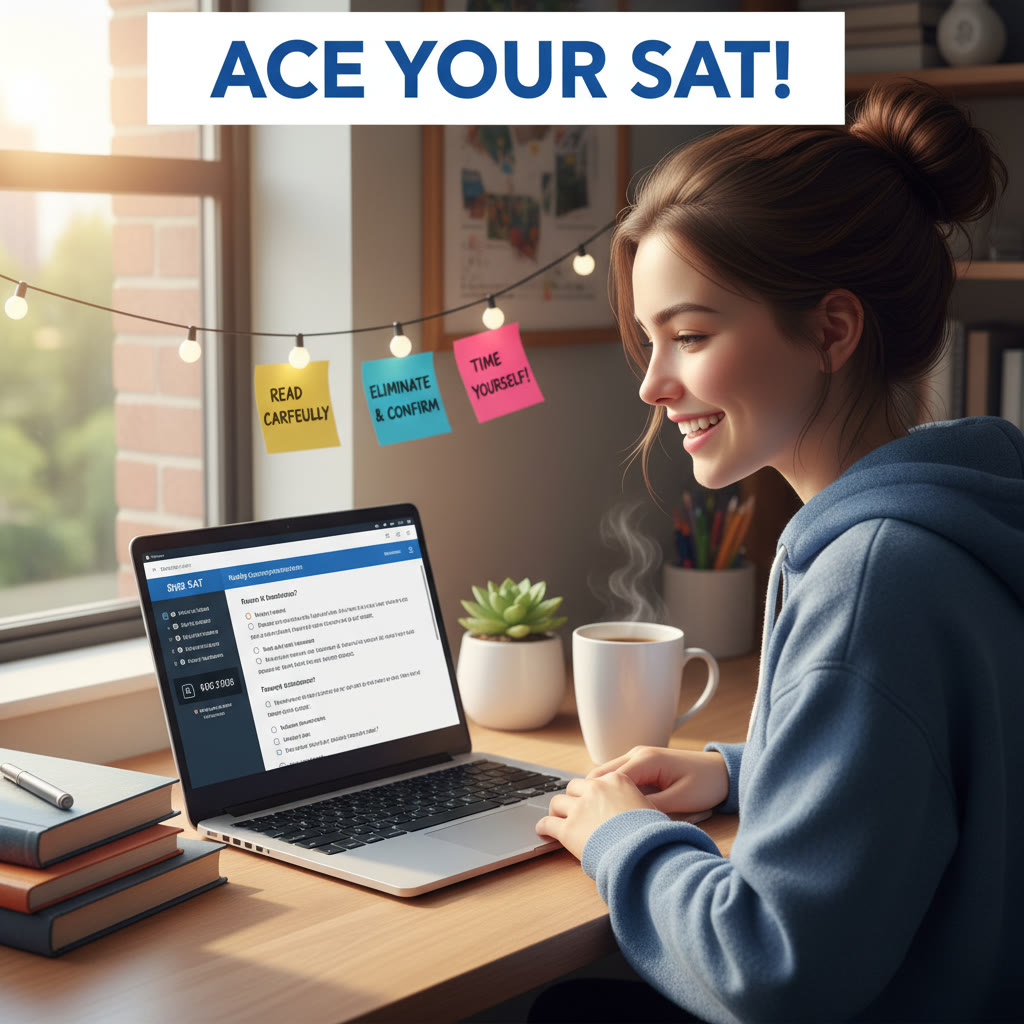Why this matters: The SAT and liberal arts colleges, plain and simple
When families talk about applying to liberal arts colleges, there’s usually a swirl of questions: Do they need SAT scores? Are scores important? Can great essays and activities make a test score irrelevant? The short answer is: it depends. But the longer, more useful answer — the one that helps you make decisions and reduce stress — requires a little unpacking.

Understanding the landscape: test-required, test-optional, and test-blind
Colleges in the United States take one of three basic approaches to standardized testing:
- Test-required — applicants must submit SAT (or ACT) scores. Some schools use scores in holistic review, others have formulaic thresholds.
- Test-optional — applicants choose whether to submit scores. Choosing not to submit won’t automatically harm an application, but submitting a strong score can enhance it.
- Test-blind/test-free — the school does not consider standardized test scores at all, even if submitted. These policies are less common but important to watch for.
Liberal arts colleges cover all three approaches. Many small-to-mid-size liberal arts institutions shifted to test-optional during the pandemic; some have since reintroduced test policies, while others still remain optional. The deciding factor often comes down to institutional priorities: enrollment targets, assessments of academic readiness, and financial aid formulas.
How colleges actually use SAT scores in admissions
Think of SAT scores as one instrument in an orchestral audition. Here’s how colleges often use them:
- Contextual filter: Admissions teams use scores alongside GPA, course rigor, and school context. A 1350 from a school where few students take AP or honors courses can carry different weight than the same score from a highly competitive high school.
- Comparative signal: Scores provide a common metric across different curricula and grading standards, helping admissions readers compare academic readiness.
- Scholarships and merit funding: Some liberal arts colleges award merit scholarships where test scores can be a significant factor.
- Placement and advising: Scores sometimes help place students into the right first-year math or writing sequence.
Real-world example
Imagine two applicants to the same liberal arts college: both have strong essays and similar extracurricular profiles. One didn’t submit scores; the other submitted a 1470. If the college is test-optional, the 1470 might strengthen that applicant’s case, particularly for competitive programs or scholarships. But if the college is test-blind, the score won’t be considered at all.
Steps to determine the right SAT strategy for specific liberal arts colleges
Start with a short, practical checklist to make an informed choice for each college on your list.
- Check the college’s current testing policy directly on their admissions page. Policies change; always verify for the specific application cycle.
- Look at admitted student profiles (median SAT ranges if published). That gives you target ranges rather than guessing.
- Ask whether scores affect merit scholarships or course placement. If yes, submitting a strong score might yield financial benefit.
- Consider how other parts of the application stack up: if GPA and course rigor are top-tier, you may safely de-emphasize SAT scores at some test-optional colleges.
- Plan testing logistics early: register for a digital SAT date that gives time for a retake if needed.
How to interpret SAT score ranges — a simple table
Below is an illustrative table to help you understand typical score bands for U.S. liberal arts colleges. These ranges are representative; verify exact medians for each college you’re targeting.
| Tier | Typical 25th–75th SAT Range | What it implies |
|---|---|---|
| Highly selective liberal arts | 1450–1560 | Strong academic profile expected; scores can impact admission and scholarships. |
| Selective liberal arts | 1300–1480 | Balanced review; solid scores are helpful but not the only path. |
| Regional liberal arts | 1150–1350 | Holistic review; test-optional policies more common. |
| Less selective / open-access | 900–1200 | Admissions focus on coursework and growth; scores often less decisive. |
Should you take the Digital SAT or skip it? Factors to weigh
The SAT is now administered digitally, which changes pacing and question formats. When deciding whether to take it, consider:
- Application goals: If top-tier liberal arts colleges are on your list, having a competitive SAT can broaden possibilities.
- Scholarship opportunities: If the colleges you want use scores for merit awards, a strong SAT is financial leverage.
- Testing comfort and timing: If you perform well in timed, digital environments, the new format can play to your strengths. Otherwise, invest in practice targeted to the digital interface.
- Time and mental bandwidth: Balancing senior-year coursework, applications, and tests is a skill — not everyone benefits from extra test attempts near deadlines.
Practical tip
Schedule your first attempt early enough to allow one or two retakes before application deadlines. This gives you time to learn from your score report and adjust study tactics.
Study strategy that actually works for liberal arts applicants
Studying for the SAT is not about blind hours — it’s about deliberate practice aligned with your goals. Here’s a focused approach:
- Start with a practice digital SAT to identify strengths/weaknesses.
- Set a realistic score goal based on the colleges you’re targeting (use the 25th–75th ranges as guides).
- Build a study plan with mixed activities: timed sections, focused content drills, and full-length practice tests on the digital platform.
- Analyze mistakes on practice tests to spot patterns (careless errors, timing issues, or content gaps).
- Incorporate evidence-based strategies: spaced repetition, interleaving problem types, and active recall.
For many families, personalized support makes a big difference. Sparkl’s personalized tutoring — with 1-on-1 guidance, tailored study plans, expert tutors, and AI-driven insights — can help pinpoint the highest-impact improvements and keep students accountable. When used judiciously, targeted tutoring often saves time and raises scores faster than unguided study.
When to submit scores — a decision flow
Use this quick decision flow before sending SAT scores to a liberal arts college:
- Does the college require scores? If yes, submit them.
- If test-optional: Is your score at or above the middle 50% of admitted students? If yes, submit it.
- If your score is below a college’s 25th percentile, consider whether other application strengths convincingly demonstrate academic readiness. If not, you might skip submitting or retake the test.
- Do you need the score for scholarship consideration? If yes, submit it if it helps with eligibility.
How to present a strong, holistic application without a top SAT
Not every successful applicant arrives with a perfect standardized test score. Liberal arts colleges prize intellectual curiosity, character, and fit. If your SAT isn’t your strongest asset, bolster these areas:
- Rigorous coursework: Challenging classes and upward trends in grades demonstrate mastery and growth.
- Compelling essays: Use essays to show thinking, voice, and how you’ll contribute to a close-knit campus community.
- Recommendations: Teachers who can speak to your curiosity and growth can outweigh a modest test score.
- Meaningful extracurriculars: Depth over breadth — leadership, sustained involvement, or creative work matters.
- Portfolio or additional evidence: For some programs (writing, studio art), portfolios or graded work samples are persuasive.
How admission officers read test-optional applicants
Admissions readers treat the absence of a score as an intentional choice, not necessarily a deficit. They interpret the full application in context. A thoughtfully explained decision not to submit scores — for example, if you’re stronger in other evidence like a high GPA in rigorous courses — can be perfectly reasonable. Conversely, submitting an average score without other compelling evidence won’t do as much good as targeted improvements elsewhere.
Scholarships, financial aid, and SATs — practical realities
Some liberal arts colleges tie merit scholarships to SAT or ACT benchmarks. That means a higher SAT could unlock sizable merit awards that change the affordability of a college. To maximize options:
- Research each college’s scholarship criteria early in the process.
- If scholarships are score-dependent, prioritize reaching scholarship thresholds.
- Use practice testing and targeted tutoring to optimize score gains for scholarship brackets — a modest investment that can produce large aid returns.
Putting it all together: a sample timeline for juniors and seniors
Here’s a practical timeline you can adapt:
- Junior year spring: Take a diagnostic digital SAT and the PSAT; identify target colleges and their policies.
- Summer before senior year: Start an intentional study plan; take at least one full practice digital SAT under timed conditions.
- Senior fall (early): Take your first official digital SAT early in the season; review score report immediately and decide if a retake is needed.
- Senior fall (later): Finalize college list, essays, and submit applications; send scores selectively based on the decision flow above.
Common myths — busted
- Myth: “If a college is test-optional, scores don’t matter.” Reality: Test-optional means optional — a strong score can still enhance an application or secure scholarships.
- Myth: “One perfect test tells everything.” Reality: Admissions look at patterns and context; consistent academic performance and curiosity weigh heavily.
- Myth: “You must aim for the absolute top percentile to get into a great liberal arts college.” Reality: Top colleges value fit, distinctive contributions, and potential just as much as scores.
How parents can help without taking over
Parents are anchors in this process. Helpful ways to support your student include:
- Helping set realistic timelines and testing plans.
- Providing logistical support (registration, transportation to test centers) without pressuring scores.
- Encouraging balanced routines: sleep, nutrition, and stress-management matter for test performance.
- Exploring targeted help when it makes sense — a few sessions of 1-on-1 tutoring or a tailored study plan can produce measurable improvements. Services like Sparkl that combine expert tutors and AI-driven insights can be a time-efficient option for focused gains.

Final checklist before you submit applications
- Confirm each college’s test policy for the application cycle you’re applying to.
- Decide whether to submit scores for each college using the decision flow above.
- If submitting, ensure official scores are sent correctly and on time.
- Double-check scholarship criteria tied to scores.
- Pair your score decision with your strongest application elements — essays, recommendations, and coursework.
Closing thoughts: strategy, balance, and confidence
Applying to liberal arts colleges is a combination of thoughtful strategy and honest storytelling. The SAT is one tool among many: for some students it opens doors and scholarship money; for others, their classroom work and creative contributions shine brighter. The best choice is one made with information and calm planning.
If you want targeted, efficient prep — whether to raise a score for a scholarship threshold or to strengthen overall readiness — consider focused, personalized help. Sparkl’s 1-on-1 guidance, tailored study plans, expert tutors, and AI-driven insights can make practice time more productive and less stressful. Whatever path you choose, aim for steady improvement, not perfection. Admissions officers are humans reading your story: show them who you are, how you learn, and the values you’ll bring to a close-knit liberal arts community.
Questions to ask next
- Which colleges on my list published median SATs, and where do my scores fall?
- Are there scholarship thresholds tied to SATs I should target?
- Do I need a tutor for content or for test strategy and pacing?
Start with those questions, keep the conversation open with your student, and create a plan that prioritizes both academic goals and well-being. The journey to a great liberal arts fit is a marathon, not a sprint — paced preparation wins.














No Comments
Leave a comment Cancel